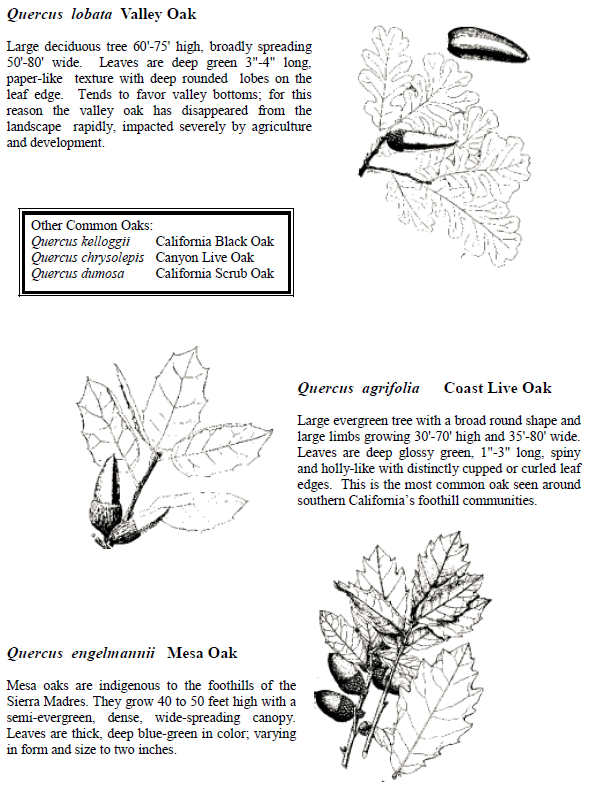Oak Tree General Information
Oak trees are a significant historical, aesthetic, and ecological resource. We must help provide favorable conditions for the preservation and propagation of this unique and threatened plant heritage. By making this part of the development process, healthy oak trees will be preserved and maintained.
Permit Requirements:
A person shall not cut, destroy, remove, relocate, inflict damage, or encroach into the protected zone of any tree of the oak tree genus without first obtaining a permit.
Damage includes but is not limited to:
∗ burning
∗ trenching
∗ excavating
∗ paving
∗ application of toxic substances
∗ pruning or cutting
∗ operation of machinery or equipment
∗ changing the natural grade
Types of Oak Trees
A few of the more common oaks are shown below. Older oak trees that have thrived under natural rainfall patterns of dry summers and wet winters often cannot tolerate the extra water of a garden setting. These trees must be treated with special care if they are to survive. Oaks that have been planted into the landscape or have sprouted as volunteers tend to be more tolerant of watered landscapes. While these vigorous young trees may grow 1 1/2 to 4 feet a year in height under good conditions, they are not as long-lived as indigenous oaks.
SCE Requirements
The duty supervisor or foreman is responsible to contact ESD if work activities or access involve ground and/or vegetation disturbance Examples include:
•Ground disturbance – vehicular overland or off-road travel to access pole or structure locations, guy anchor replacement, pole replacement, access road maintenance, or underground cable repair.
•Vegetation disturbance – tree trimming, tree removal, and creation of a foot path.

